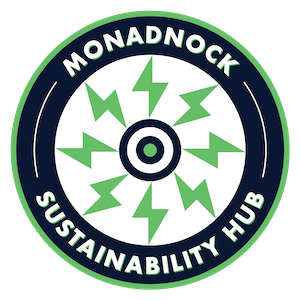The term “Zero Net Energy” (ZNE) is new to many. Generally, it applies to homes which produce all (or more!) of the energy that they consume on an annual basis. Consider that residential energy usage accounts for approximately 21% of our nation’s energy use. ZNE construction yields incredible benefits to personal finances, enhances local and national economies and protects our environment.
So what does a ZNE home look like? You can’t tell from a drive-by these days. The only clues might be solar hot water or photovoltaic modules on the roof. Here is a quick list of typical components of ZNE homes in the New England region:
- Southern orientation to take advantage of passive solar heating – this alone can reduce energy consumption by over 30%.
- Super-insulated shell or envelope of the home – here is an easy one to remember: 20-40-60! R20 foundation walls, R40 exterior walls, R60 roof or ceiling. This is beyond current building code requirements. With this formula, the home will lose very little heat.
- Windows – instead of the R2 insulated glass of the 1970’s, new high performance units can get close to R10.
- Ventilation – since these homes are built tight with little air infiltration, mechanical ventilation is necessary to bring in a controlled fresh air source. In this region, we use Heat Recovery Ventilation units (HRVs) which run on very little electricity. The new mantra: “when you insulate, you ventilate.”
- Size – typically ZNE homes are smaller with less surface area and with more efficient floor plans. Less space to heat allows heating devices to be downsized accordingly.
- Heating – no fossil fuels! Say goodbye to oil & propane tanks! Enter the highly efficient electric heat pump for home heating. These small devices can heat and also cool. Some homes may retain propane for cooking and back-up wood or pellet stoves for heating.
- Power plant – a ZNE home has its own! Solar photovoltaics (PV) produce electricity on the roof and power the lights, appliances and heating/cooling devices.
- Grid tied – no storage batteries needed! Now, with effective net metering rules, these homes can essentially store or bank their excess electricity on the utility grid. Then, at night or on days of little sunlight, they may draw upon the grid as the make-up source.
- Domestic hot water – highly efficient heat pump hot water tanks take advantage of the PV electricity that is being generated on the roof top.
- Lighting and appliances – LEDs and compact fluorescents provide most home lighting. Depending on personal preferences, some folks enjoy the benefits of energy efficient inductive stove top ranges. With this, the propane delivery truck can disappear!
And lastly, the final mechanism is the Zero Net Energy occupant. Without good conservation habits, it is very easy to waste energy in any home. In a nutshell, this is a super insulated electric home with its own environmentally friendly power plant. Now, can you imagine yourself living in such a home? Our planet would certainly appreciate it!
Doug Walker is an energy auditor, home performance contractor and Board member of the Monadnock Sustainability Network whose mission is to promote credible, sustainable/“green” practices in the region.
